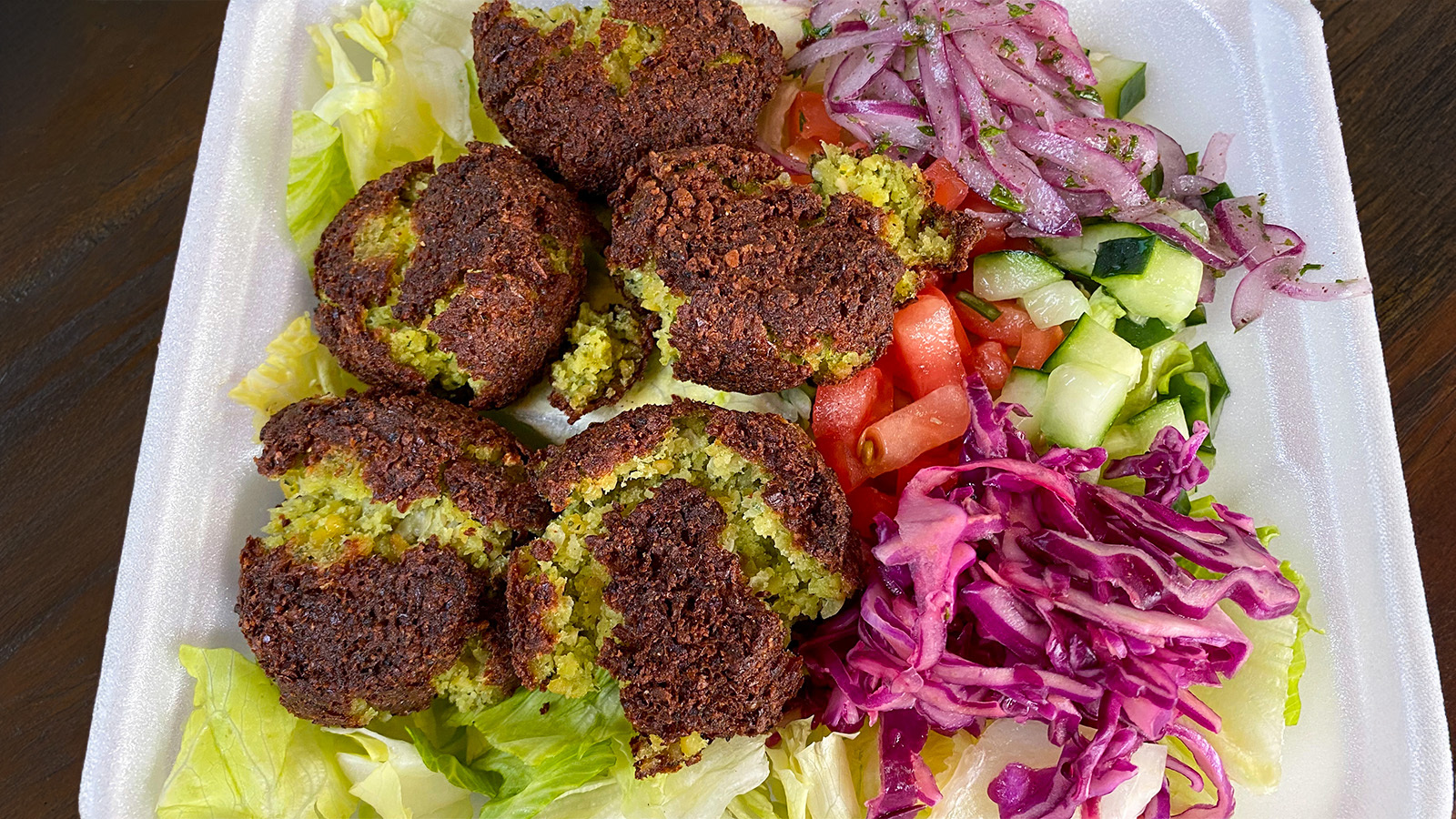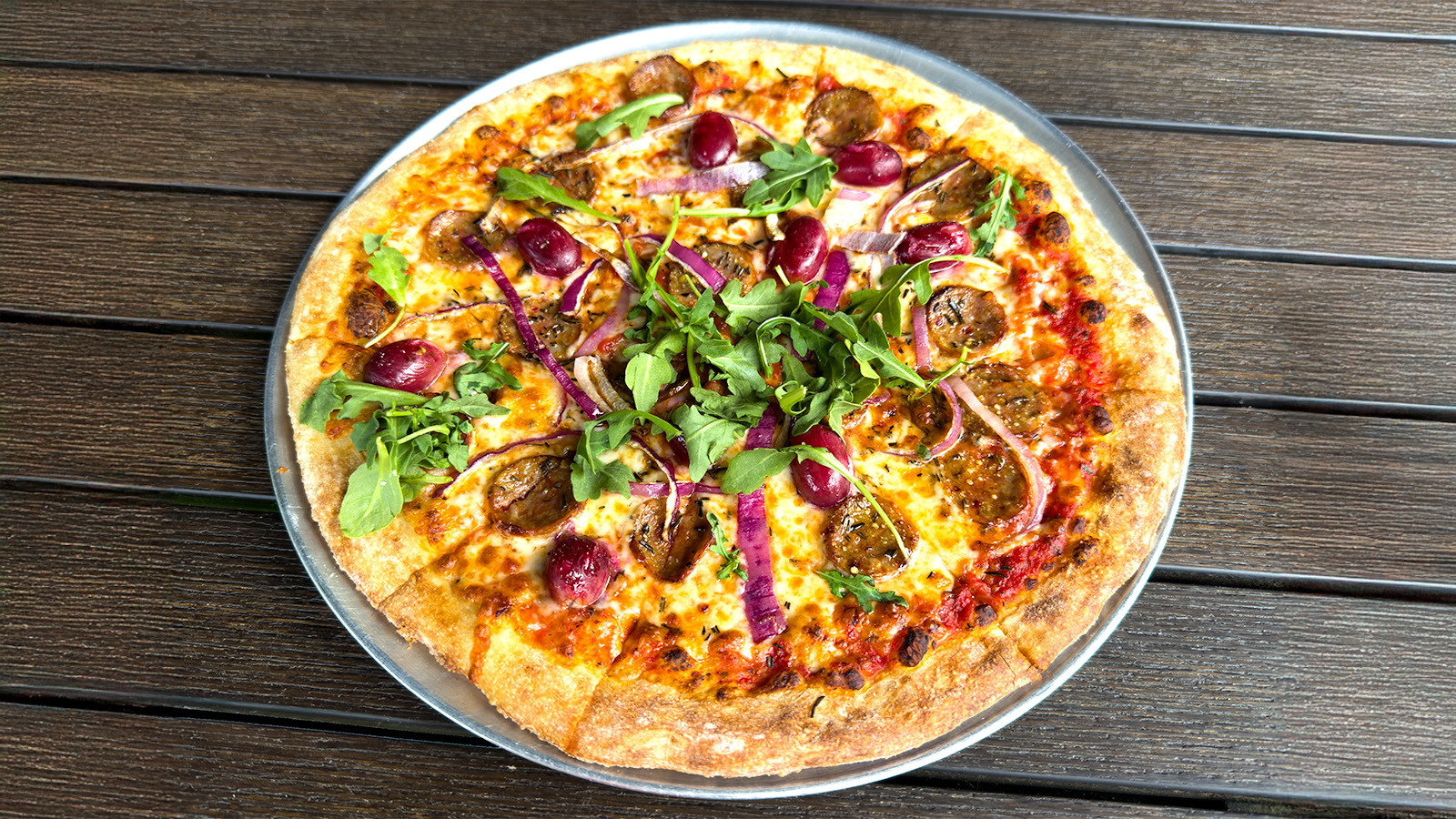
Editor's Note: This story is unlocked for everyone to read courtesy of the CRVA, our partner in nourishing culinary exploration for residents and visitors of the Queen City.
May 2, 2024
How urban farming in Charlotte is changing how we grow food
In small spaces, farmers are using new methods
by Lynn S. Caldwell

Urban agriculture is a hot topic — and, as cities sprawl, is also becoming recognized as necessary. Growing food in an urban environment reduces transportation costs, creates opportunities for education and social engagement, and contributes a vital layer of food security to our local communities.
The practice of farming in an urban area is quite different from growing acres of row crops in a rural setting. Several farms are being established to grow intensively in the soil on an acre or two within the city limits of Charlotte, but more often you’ll find urban farms in backyards, shipping containers, and other indoor facilities. They are proving to be highly productive operations if you look at the numbers.
While a centrally located urban farmer with limited space can’t grow crops like potatoes or corn to make a profit, growing crops that are densely nutritious can have lucrative economic returns.
When you visit farmers’ markets in the Charlotte area or dine at restaurants that support local producers, you may have noticed a proliferation of boutique offerings like mushrooms, microgreens, edible flowers, and unique heirloom vegetables. These are considered to be “high-value” crops because a great deal can be grown in a small space with a few seeds or spores, and can be sold at a farmers market or through a distributor for a higher dollar amount per pound than more standard offerings such as winter squash or sweet potatoes that are seasonal, can be grown in significant quantities with ample land, but have a long shelf life.
“Urban environments are uniquely positioned to grow high-value crops in controlled environments,” says Sam Fleming, the Executive Director of 100 Gardens. “Medium value and lower value crops that can be produced in larger quantities in more rural areas are vital to our food system. But there is still so much we can do and grow within the city limits.”
100 Gardens began as legendary Charlotte-born architect Ron Morgan’s vision to feed the victims of the 2010 Haiti earthquake. Morgan designed and installed aquaponics gardens in shipping containers for the people of Haiti, providing them with a sustainable way to feed themselves.
Since then, 100 Gardens has evolved into a multi-faceted program focused on sustainable growing solutions using aquaponics and is the foundation for an educational platform that is serving more than 22 schools and institutions in the Charlotte area and in Massachusetts. The 100 Gardens standards-aligned curriculums are delivered through hands-on experiences that kids remember.
These programs have shown to improve the health of the kids that are involved, while also teaching the value of the plants and tilapia that make an aquaponics system work. 100 Gardens sells some of their greens to Mariposa, and students have an opportunity to eat what they grow and to learn about careers in agriculture.
They will certainly be part of a new generation of growers emerging to complement what happens in our rural regions. Due to the cost and availability of land in our most urban communities, growers who want to rethink production are getting savvy and creative. You can’t get much closer to urban Charlotte than a West End neighborhood.
There, Mouna Bowa Farms grows microgreens, edible flowers, and specialty vegetables all around her home near Johnson C. Smith University. Sauls also has a job at Alexander Michaels restaurant and homeschools her two children, who provide extra hands when it comes time to plant and harvest. Every inch of her property has been put to use with two greenhouses, a huge compost pile, and lots of raised beds covered by low tunnels to extend the seasons.
Mouna Bowa Farms sells around 500 two-ounce clamshells of organically-grown microgreens per week to area restaurants, through home deliveries, and at two farmers markets. Microgreens are in high demand because they are tasty and densely nutritious. They grow fast and can be harvested quickly, usually within 8-12 days of methodically planting the seeds. The greenhouses consistently contain more than 60 trays of actively growing microgreens. Sauls likens the process to “caring for millions of tiny children.” Her home and production processes are intensely organized down to the last detail.
Mouna Bowa’s zero-waste operation takes any microgreens that aren’t sold and turns them into a microgreen powder using a dehydrator. Sauls also produces tinctures and teas, as well as jewelry that encases some of the flowers and leaves from the garden. While the Sauls family loves living in an urban area, the right property just outside of Charlotte to build a homestead is not out of the question.
As transportation is becoming a serious consideration for our food system because of carbon emissions, it is noteworthy that Julian Jacobs of Adrina Farms is growing a variety of lettuces and other greens in shipping containers. In two stacked, 8-by-40-foot units at the Charlotte Innovation Barn site plus an additional unit at Camp North End, he crafted a carefully and scientifically controlled environment for 8 dual-sided sliding walls in each container. Jacobs is already producing more than 2,250 heads per week, with the ability to generate more.
“The greens we produce are fresher, cleaner, last longer, and there is less waste because we deliver a ready-to-eat product consistently,” Jacobs says. “We can steadily deliver our products on a year-round basis. This gives Adrina Farms the ability to provide local restaurants and distributors like Freshlist with a reliable supply.”
Jacobs hopes to be able to begin vending at a local farmers market soon. His growth plan includes researching other ways to grow food in urban environments using hydroponics, which would allow him to farm vining plants like tomatoes and cucumbers. He sees urban farming as the way of the future and is committed to being a full-time farmer after years of owning businesses focused on immersive international learning experiences and logistics.

Adrina Farm’s nearby neighbor at the Innovation Barn is Charlotte Mushroom Works, which is also housed in a shipping container. Owner Colton Crallie grew up on a farm, foraging mushrooms with his father. He went on to pursue a degree in mechanical engineering, which has been useful expertise as he cultivates mushrooms and fosters a business growing them with a unique approach and a controlled environment. Like Adrina Farms, every system is on a monitor or a timer.
Charlotte Mushroom Works has started using biodegradable plastic bags to be a zero-waste operation. The few mushrooms that don’t sell are composted or are enjoyed by their staff. This summer, Crallie anticipates selling 250 to 300 pounds of mushrooms per month, and generally sells out at all five of the farmers markets where Charlotte Mushroom Works vends.
Charlotte Mushroom Works currently has four employees who have been carefully educated on growing and selling mushrooms. In 2025, the business hopes to pursue a Good Agricultural Practices (GAP) certification, which would open up more distribution opportunities to schools and institutions. He bought land in Waxhaw that is being used to inoculate and harvest shiitakeshitake logs, and to explore how to expand his business. Commercial space in Mecklenburg County is pricey, so urban growers are always looking for other options.
Like any business, investments are risky and calculated. Crallie still operates a side business framing houses but hopes to be farming full time soon. As urban farmers continue to find ways to grow their businesses and grow more food by making the most of small spaces in creative ways, they’re also expanding the city’s ability to feed itself.











